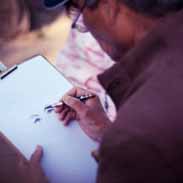OSTOMY CARE – Flashcards
Unlock all answers in this set
Unlock answersquestion
A nurse is obtaining health history from a young adult patient who has a colostomy. The patient reports frequent episodes of loose stools over the last month, but has no signs of infection or bowel obstruction. He reports that his concerns about leakage have limited his social activities. Which of the following should the nurse recommend?
answer
A: Consume foods that are low in fiber content. Rationale: Foods low in fiber help thicken the stool; examples include rice, noodles, white bread, cream cheese, lean meats, fish, and poultry.
question
A nurse is providing preoperative teaching for a patient who has colon cancer. The surgeon informed the patient his entire large intestine and rectum will be removed. The nurse should explain the type of ostomy he will have is
answer
A: A ileostomy R: After removing the entire large intestine and the rectum, the surgeon will create an ileostomy to divert feces from the small intestine to the abdominal surface and into an ostomy pouch.
question
A nurse is providing preoperative teaching for an older patient who has diverticulitis and is scheduled for a creating for a double barrel colostomy in the sigmoid colon. Which of the following instructions should the nurse include in the teaching?
answer
A: Tape a dry gauze pad over the distal stoma to collect drainage. R: The distal stoma (also called a mucous fistula) secretes mucus; it does not drain feces. A dry gauze dressing is usually sufficient.
question
A nurse is teaching a patient with a new ileostomy about incorporating preventive strategies at home. To prevent excoriation and breakdown of the peristomal skin, the nurse should instruct the patient to
answer
A: Empty the pouch when it is no more than half full. R: Waiting until the pouch is more than half full increases the risk of leakage. Ileostomy effluent is irritating to peristomal skin, so patients should replace the pouch when it is one-third to one-half full.
question
While a nurse is teaching a patient how to replace her ostomy pouching system, the patient reports that removing the skin barrier is sometimes painful. Which of the following should the nurse suggest?
answer
A: Push the skin away from the barrier while removing it. R: Pushing the skin away from the barrier helps prevent skin stripping, which can be painful and make the skin sensitive to the adhesive. If the patient is having difficulty with the initial release of the barrier, it may help if she starts in one corner and gently pulls it over the stoma while pushing the ski away from the barrier.
question
A nurse is teaching a patient how to apply an extended-wear skin barrier. Which of the following strategies should the nurse instruct the patient to use for maximal adherence?
answer
A: Press gently around the barrier for 1 to 2 minute. R: The pressure-sensitive tackifiers and heat-sensitive polymers of the skin barrier require adequate pressure (and warmth from the fingers) to ensure adherence.
question
A nurse is replacing the ostomy appliance for a patient whose newly created colostomy is functioning. After removing the pouch, which of the following should the nurse do first?
answer
A: Cleanse the stoma and peristomal skin. R: To facilitate the nurse's assessment of the stoma and the peristomal skin, the nursemust remove any effluent adhering to the area.
question
A patient who has bladder cancer tells the nurse that, of the various urinary diversion options the surgeon presented, she prefers one that will allow her to have some control over urinary elimination. The nurse should explain the option that will allow that is
answer
A: A Kock's pouch R: This is a continent ileal bladder conduit that does not require an external drainage collection device because the patient self-catheterizes every 2-4 hours to remove urine. This device will provide the control the patient desires.



